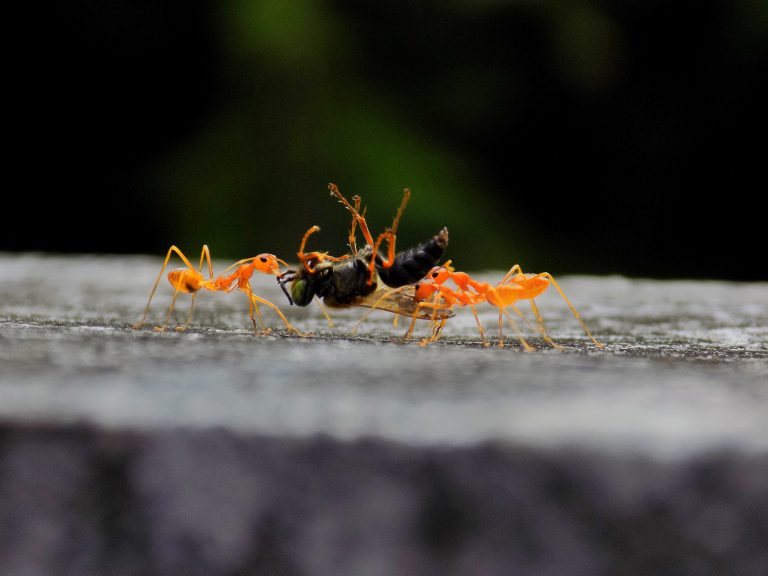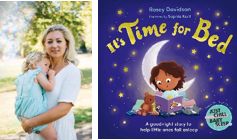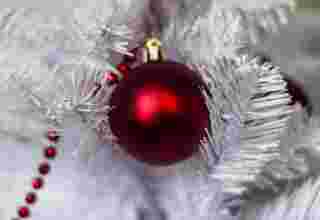
New York office – 646-873-7565 / [email protected]
From gnats to mosquitoes, fire ants and beetles – about six in 10 Americans are confident they can identify common bugs, according to new research.
But a survey of 2,000 Americans put that to the test and found it’s trickier than people think.
Even though 62 percent felt capable of identifying different critters, only 40 percent were able to recognize a bed bug when presented with a photo, while half (51 percent) struggled to name a fruit fly.
Six in 10 (62 percent) were able to identify a roly poly – but just a third (33 percent) were able to correctly name a wasp (versus the 24 percent who thought the photo was a honeybee).
Conducted by OnePoll on behalf of Zevo, the survey found that more men than women reported being “very knowledgeable” about bugs (59 percent vs. 49 percent) – but let’s see how the battle of the sexes played out when their knowledge of bugs, insects and other creepy crawlies was put to the test.
To their credit, men were more likely to correctly identify “entomology” as the study of insects (53 percent vs. 43 percent), but women were better at spotting carpenter ants (43 percent vs. 39 percent).
And while men were better at identifying ticks (53 percent vs. 43 percent), women were more likely to know that cockroaches can lay over 50 eggs at once.
“Some insect pests can be highly prolific under favorable conditions. As an example, German cockroaches lay ootheca that can contain up to 60 eggs,” said Dr. Josh Benoit, an entomologist at the University of Cincinnati. “These eggs can then develop into adults within about 90-110 days. The high reproduction can allow populations to grow quickly and become a substantial nuisance.”
When looking at all respondents, only a third (35 percent) were aware that honeybees and bumblebees are different animals.
Forty-nine percent believe ladybugs are always red and black – when they actually come in a plethora of colors – and 28 percent erroneously think a wasp dies after stinging (though they might be confused with a honeybee).
That’s in addition to the 55 percent who were aware that cockroaches can freeze and unfreeze during winter and the 60 percent who knew that bugs have been around for longer than dinosaurs.
And people always fear the unknown: Americans’ lack of knowledge might be a contributing factor for the 64 percent who are scared of bugs. Interestingly enough, men were more likely than women to be “very scared” of bugs (32 percent vs. 22 percent).
The worst parts of having bugs inside were found to be receiving bug bites (56 percent), seeing them but then not being able to find them (45 percent) and worrying that the pesky critters will crawl on them while they sleep (44 percent).
“Few people realize that the indoor biome is a specific habitat that only certain insects can tolerate. This indoor environment usually has a different temperature and relative humidity compared to outside,” Benoit continued.
“Pests that live in this area have specific adaptations to survive and proliferate in this specific environment, for example, cockroaches can tolerate extended periods without food and water since these resources might not be readily available.”
To get rid of bugs, respondents most commonly turn to using bug killer spray around their home (55 percent). Less than half claimed to use mosquito-repellent bracelets (44 percent) or fly swatters (41 percent).
Even with the prevalent use of bug killer spray, the majority of respondents (56 percent) claimed to be worried about the chemicals they contain.
Concerns about ingredients might be one of the reasons why respondents are turning toward new approaches. Three in 10 report having tried home remedies for pests, in an effort to keep bugs and harsh chemicals out.
TEST YOUR OWN BUG KNOWLEDGE:
Are the following statements true or false?
1. Bumblebee and honeybee are two names for the same animal
2. Bugs have been around for longer than dinosaurs
3. Ants can lift 1,000 times their own weight
4. Ladybugs are always black and red
5. You can tell the weather by a cricket’s chirps
6. Cockroaches can freeze and unfreeze themselves during the winter
7. German cockroaches can lay 10 eggs at once
8. A colony of 40,000 ants is as smart as a human being
9. There are more kinds of plants than there are beetles
10. Houseflies find sugar with their antennae
11. Honeybees have hair on their eyes
12. Spiders can map your home in three dimensions
13. Wasps die after stinging you
14. Flies carry 200 different types of bacteria
15. The myosrum is one of three body parts on an insect
Answers: 1. False, 2. True, 3. True, 4. False, 5. True, 6. True, 7. False, 8. True, 9. False, 10. True, 11. True, 12. True, 13. False, 14. False, 15. False
AMERICANS WERE ABLE TO IDENTIFY . . .
1. Roly poly 62 percent
2. Tick 51 percent
3. Fruit fly 49 percent
4. Bed bug 40 percent
5. Carpenter ant 40 percent
6. Wasp 33 percent
7. Brown recluse 22 percent



















